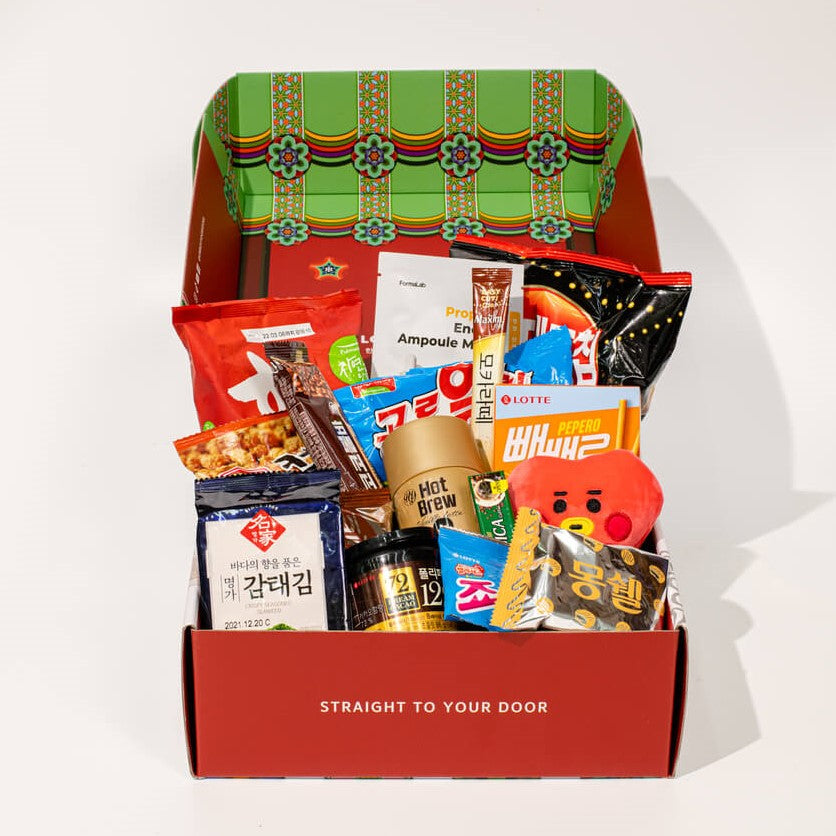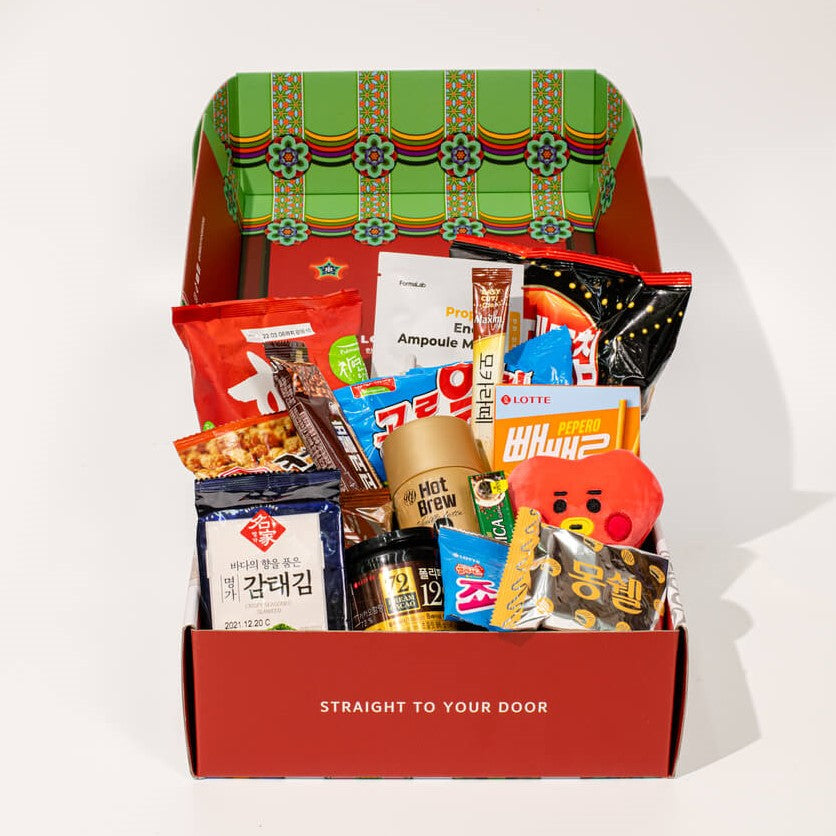The tantalizing world of Korean street food beckons food lovers from all corners of the globe. With its vibrant colors, bold flavors, and unique textures, Korean cuisine has gained immense popularity worldwide. From sizzling skewers of meat to piping hot bowls of noodles, Korean street food offers an irresistible culinary adventure. In this blog, we embark on a mouthwatering journey to explore the diverse and flavorful street food culture in Korea. Get ready to indulge your senses and discover the hidden gems of Korean street food.
Brief overview of Korean cuisine and its popularity
Korean cuisine is renowned for its emphasis on fresh ingredients, balanced flavors, and healthful cooking techniques. It has gained tremendous popularity in recent years, with Korean restaurants and dishes appearing in cities around the world. Korean cuisine's popularity can be attributed to its bold and savory flavors, the health benefits of its traditional ingredients, and the growing interest in global flavors.
The cultural mosaic through street food
- Korean street food reflects the diverse regional flavors and cultural influences present throughout the country.
- Each region offers its own specialties, ingredients, and cooking techniques, providing a glimpse into the cultural mosaic that makes up Korean cuisine.
Unveiling the Treasures of Korean Street Food
Traditional Street Food Delights
- Explore iconic street food dishes like tteokbokki (spicy rice cakes), sundae (blood sausage), and hotteok (sweet pancakes).
- Discover the ingredients, cooking techniques, and historical significance behind these beloved street food classics.
Modern and Fusion Creations
- Witness the emergence of modern and fusion street food in Korea, blending traditional flavors with global influences.
- Delve into popular modern street food items like cheese corn dogs, ramen burgers, and unique culinary mashups that push the boundaries of taste.
Traditional Korean Street Food

Image credit: via pinterest
Overview of traditional Korean street food
The vibrant street food scene in Korea has a rich history and is deeply rooted in the country's culinary traditions. Korean street food is known for its affordable prices, convenient availability, and mouthwatering flavors. Street food stalls, known as pojangmacha, can be found throughout bustling markets, shopping streets, and even residential areas.
Popular dishes like tteokbokki, sundae, and hotteok:
- Tteokbokki: A beloved street food dish consisting of chewy rice cakes cooked in a spicy gochujang sauce. It is often accompanied by fish cakes, boiled eggs, and vegetables.
- Sundae: Not to be confused with ice cream, sundae is a traditional Korean blood sausage made with a mixture of pork, glass noodles, and various seasonings. It is usually steamed or boiled and served with spicy sauce and vegetables.
- Hotteok: A sweet and chewy pancake filled with a mixture of brown sugar, cinnamon, and chopped nuts. It is griddled until golden and enjoyed piping hot.
Description of ingredients and cooking techniques:
- Tteokbokki: The main ingredient is tteok, which are cylindrical rice cakes made from glutinous rice flour. The sauce is made from gochujang (fermented red chili paste), soy sauce, sugar, and other seasonings. The dish is typically stir-fried or simmered.
- Sundae: The sausage casing is made from pig intestines stuffed with a mixture of finely chopped pork, glass noodles, vegetables (such as green onions and garlic), and seasoning. It is then cooked by steaming or boiling.
- Hotteok: The pancake batter is made from a mixture of wheat flour, water, sugar, and yeast. The filling is made by combining brown sugar, cinnamon, and chopped nuts. The pancake is pan-fried until crispy on the outside and gooey on the inside.
Insight into the historical and cultural significance of these dishes
- Tteokbokki: Originating from the Joseon Dynasty, tteokbokki was originally a royal court dish but eventually became popular as a street food. It reflects the use of rice, a staple ingredient in Korean cuisine, and the love for spicy flavors.
- Sundae: Sundae has its roots in Korean sausages brought by Mongol invasions during the Goryeo Dynasty. Over time, it evolved into a popular street food dish that represents the resourcefulness of Koreans in using various parts of the pig.
- Hotteok: Introduced during the early 20th century, hotteok is believed to have been influenced by Chinese stuffed pancakes. It has become an iconic street food snack that brings warmth and comfort, especially during the colder months.
Regional Variations in Street Food
Just as Korea boasts a diverse landscape and regional cultures, its street food scene varies across different regions. Each region offers its own unique flavors, ingredients, and local specialties, making the street food experience a culinary adventure.
Focus on Seoul, Busan, and Jeonju

Image credit: honestfoodtalks via web
Seoul:
As the capital city and culinary hub of Korea, Seoul is a treasure trove of street food delights. Its bustling markets like Namdaemun Market and Gwangjang Market are famous for a wide variety of street food offerings.
Signature street food dishes include:
- Gyeran-bbang: Soft and fluffy egg bread filled with a whole egg, often enjoyed as a quick breakfast.
- Jokbal: Tender and savory braised pig's trotters seasoned with soy sauce and spices.
- Eomuk: Fish cakes served on skewers or in a warm soup, available in various flavors and textures.

Image credit: mangoplate via web
Busan:
As a coastal city renowned for its fresh seafood, Busan offers a unique twist to Korean street food. The Jagalchi Fish Market and Gukje Market are popular destinations for street food enthusiasts.
Signature street food dishes include:
- Milmyeon: Cold and chewy wheat noodles served with a spicy and tangy sauce, topped with various vegetables and often seafood.
- Ssiat Hotteok: A variation of hotteok with a filling of seeds such as pumpkin, sesame, and sunflower, adding a delightful crunch to the pancake.
- Gukbap: A hearty soup made with beef or pork, served with rice and often enjoyed with kimchi.

Image credit: bonappetit via web
Jeonju:
Jeonju is known as the food capital of Korea, renowned for its rich culinary heritage and traditional flavors.Hanok Village and Nambu Market are prominent spots to explore Jeonju's street food scene.
Signature street food dishes include:
- Bibimbap: A classic Korean dish consisting of a bowl of rice topped with an assortment of vegetables, meat, and gochujang sauce.
- Kongnamul Gukbap: A comforting soybean sprout soup served with rice and various side dishes, representing Jeonju's emphasis on simple and nourishing flavors.
- Jeonju-style kimbap: A unique variation of kimbap, a rice roll with various fillings, often incorporating Jeonju's famous bibimbap ingredients.
Modern and Fusion Street Food
In recent years, Korean street food has experienced a dynamic transformation with the emergence of modern and fusion creations. Inspired by global food trends and creative culinary experimentation, vendors have started offering innovative twists on traditional dishes and incorporating international flavors.
The globalization of food culture and the increasing popularity of Korean cuisine worldwide have played a significant role in shaping modern street food in Korea. Global food trends, such as the rise of food trucks, the popularity of comfort foods, and the fusion of different culinary traditions, have influenced Korean street food vendors to experiment with new flavors and techniques.
Examples of popular modern street food items:
- Cheese Corn Dogs: A modern take on the classic corn dog, this street food delicacy features a hot dog on a stick coated in batter and deep-fried to perfection. What sets it apart is the addition of a generous layer of melted cheese on the outside, creating a delightful combination of flavors and textures.
- Ramen Burgers: A fusion creation that combines elements of Korean and American cuisine, the ramen burger replaces the traditional burger bun with two discs of fried ramen noodles. The patty, often made with beef or pork, is sandwiched between the crispy ramen "buns," offering a unique and satisfying eating experience.
Impact of social media on the popularity and accessibility of these dishes
Social media platforms, such as Instagram and YouTube, have played a significant role in popularizing modern and fusion street food in Korea. Food bloggers, influencers, and viral videos showcasing these innovative street food creations have created a buzz, attracting both local residents and international tourists. Social media platforms have made it easier for vendors to showcase their unique offerings, increasing the accessibility and visibility of these dishes to a wider audience.
Street Food Markets and Festivals

Image credit: via pinterest
Korea is famous for its bustling street food markets, where vendors showcase a wide array of mouthwatering delicacies. These markets are vibrant hubs of activity, offering visitors a sensory experience filled with delicious scents, colorful displays, and lively atmosphere. These festivals showcase a wide variety of street food vendors, providing a unique opportunity to sample different dishes and explore the diverse flavors of Korean cuisine.
Famous markets such as:
Gwangjang Market:
Located in Seoul, Gwangjang Market is one of the oldest and largest traditional markets in Korea. It is renowned for its incredible street food scene, with numerous stalls offering a wide range of delectable treats. Visitors can enjoy classics like bindaetteok (mung bean pancakes), mayak gimbap (bite-sized seaweed rice rolls), and yukhoe (Korean beef tartare).
Myeongdong Street:
Situated in the heart of Seoul, Myeongdong Street is a bustling shopping district that is also famous for its street food. Food carts and stalls line the streets, offering a variety of snacks and treats for visitors to indulge in. Some popular street food items found in Myeongdong include tteokbokki, hotteok, and Korean-style chicken skewers.
Street Food Etiquette and Tips
Korean dining etiquette emphasizes respect and communal dining. Common practices include using both hands to receive or pass dishes, using chopsticks and spoons appropriately, and waiting for the oldest or most senior person to begin eating before starting yourself. Showing gratitude and compliments to the cook or vendor is also appreciated.
Specific guidelines for enjoying street food in Korea
- Observe the queue: If there is a line at a street food stall, join the queue and wait patiently for your turn.
- Be mindful of the space: Street food stalls can be crowded, so be aware of your surroundings and avoid blocking pathways or congesting the area.
- Dispose of trash properly: Use designated trash bins to dispose of wrappers, cups, and other food packaging. Keeping the street clean is important in Korean culture.
Tips for finding the best street food vendors and identifying quality offerings
- Follow the locals: Pay attention to where locals are lining up or frequenting. Locals often know the best spots for delicious street food.
- Look for popular vendors: Long queues and high turnover of customers are usually indicators of a popular and reputable street food vendor.
- Cleanliness and hygiene: Check for cleanliness in the preparation area, utensils, and the vendor's overall appearance. This can be a good indicator of the vendor's commitment to hygiene and food safety.
Advice on navigating dietary restrictions or allergies while enjoying street food
- Research common ingredients: Familiarize yourself with common ingredients used in Korean street food and check for any potential allergens.
- Communicate dietary restrictions: If you have specific dietary restrictions or allergies, communicate them clearly to the vendor. They may be able to suggest alternatives or provide ingredient information.
- Opt for made-to-order options: Choose street food items that are prepared fresh and made-to-order. This allows for better control over ingredient substitutions or exclusions.
Navigating street food with consideration for etiquette, quality, and dietary restrictions ensures an enjoyable and safe experience. By embracing Korean dining customs, being mindful of your surroundings, and seeking out reputable vendors, you can fully immerse yourself in the delightful flavors of Korean street food while respecting the local culture and community.
Conclusion
Korean street food is a vibrant and diverse culinary realm that showcases the rich flavors and culinary heritage of Korea. From traditional favorites like tteokbokki and hotteok to modern fusion creations like cheese corn dogs and ramen burgers, Korean street food offers a captivating range of flavors, textures, and aromas. Each region within Korea boasts its own specialties and unique street food experiences, reflecting the country's diverse culinary landscape.
If you're a food enthusiast or an adventurous traveler, Korean street food is an absolute must-try. Embark on a culinary journey through bustling street markets, vibrant food stalls, and exciting street food festivals. Immerse yourself in the sights, sounds, and tantalizing aromas as you savor the delicious offerings that Korean street food has to offer. Whether you find yourself wandering the bustling streets of Seoul, don't miss the opportunity to immerse yourself in the world of Korean street food.






